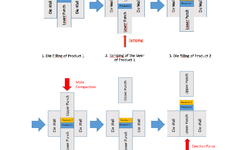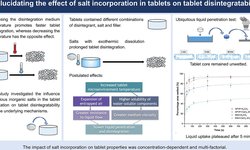Scientific papers
Food compacts offer convenience to both the industry and customers, necessitating a robust strength to endure the rigors of packaging processes and customer handling. Unlike pharmaceutical applications, where excipient choices are often limited to essential ingredients, the realm of food production seeks novel materials derived from advanced processing of common constituents. This research extensively evaluates the properties of a groundbreaking co-processed food material termed "Salt-Starch," aiming to showcase its exceptional tableting performance and delve into the reasons behind its superiority.
To gain a fundamental understanding of the binding mechanisms and resulting structure, as well as the tabletability, compressibility, compactibility, and elastic recovery of compacts based on Salt-Starch, the study investigates its sole starting components with varying particle sizes and their physical blends. The findings reveal that the distinctive structure characterized by a viscoelastic continuous phase of starch and a brittle-ductile dispersed phase of (sub-)micron-sized sodium chloride contributes to the remarkable strength of Salt-Starch. This strength surpasses that achievable with physical mixtures, with compacts exhibiting a tensile strength increase of 40 times under an applied pressure of 55 MPa, and an elastic recovery less than half when compared to binary mixture tablets.
Comments
No comments posted yet.
Add a comment















